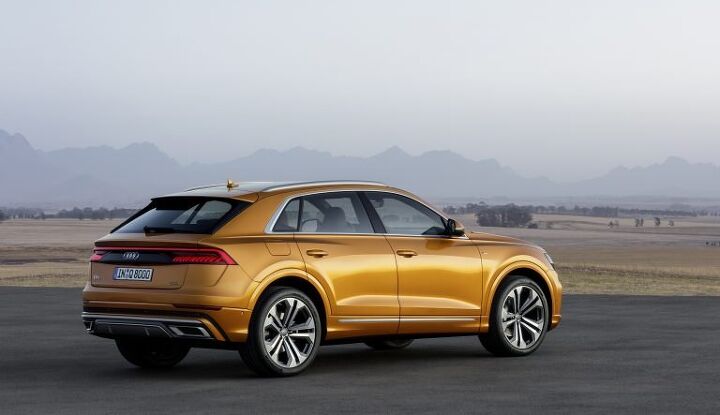Hey, Wait Up: Audi Crafts Realignment Plan After German Rivals Spring Ahead

Audi’s global sales fell 3.5 percent in 2018, placing the Volkswagen Group brand further behind in its bid to challenge the likes of Mercedes-Benz and BMW. As its revenue dipped, so too did the brand’s operating margin.
Mistakes were made, the automaker claims.
As it gears up to present a strategic realignment plan on May 23rd, Audi’s echoing Ford in claiming 2019 will be a “transition” year.
Audi’s biggest mistake was not planning for the European Union’s new WLTP testing cycle, which led to a severe drop-off in deliveries in 2018. European sales sank 14 percent. The brand’s return on sales fell to 6 percent, down from 7.8 percent the year before.
“We cannot be satisfied with our performance. Audi has excellent products on the market, but in business terms, we failed the WLTP changeover as the ultimate stress test,” says Board of Management Chairman Bram Schot in a statement.
Investment in electric vehicle development and lingering costs from the diesel scandal further hurt the brand’s financial standing. The solution? In addition to the streamlining and targeted investments seen in the brand’s Transformation Plan, more high-end vehicles appears to be the key.
Audi puts the pedal down on its future proofing efforts on May 23rd with the release of its realignment strategy.
“We are significantly accelerating the change, because we have to master a double transformation,” sid Schot. “We will be much more customer-oriented and less self-centered; we will focus on what is decisive and implement what is decided upon in a very consistent and disciplined manner.”
In the coming years, Audi promises further “bundling of platforms and vehicle architectures,” increased speed and efficiency across all divisions, and a boost in high-margin vehicle production. Like its rivals, Audi knows EVs don’t pay for themselves. A smattering of new, pricey SUVs and crossovers can help generate the cash needed for R&D.
“By 2025, the product range in the upper mid-range and full-size segment will have grown to 15 models,” the automaker stated.
Want to help save the world? Buy a Q8.
[Image: Audi AG]

More by Steph Willems
Latest Car Reviews
Read moreLatest Product Reviews
Read moreRecent Comments
- Analoggrotto Kia Tasman is waiting to offer the value quotient to the discerning consumer and those who have provided healthy loyalty numbers thinks to class winning product such as Telluride, Sorento, Sportage and more. Vehicles like this overpriced third world junker are for people who take out massive loans and pay it down for 84 months while Kia buyers of grand affluence choose shorter lease terms to stay fresh and hip with the latest excellence of HMC.
- SCE to AUX That terrible fuel economy hardly seems worth the premium for the hybrid.Toyota is definitely going upmarket with the new Tacoma; we'll see if they've gone too far for people's wallets.As for the towing capacity - I don't see a meaningful difference between 6800 lbs and 6000 lbs. If you routinely tow that much, you should probably upgrade your vehicle to gain a little margin.As for the Maverick - I doubt it's being cross-shopped with the Tacoma very much. Its closest competitor seems to be the Santa Cruz.
- Rochester Give me the same deal on cars comparable to the new R3, and I'll step up. That little R3 really appeals to me.
- Carson D It will work out exactly the way it did the last time that the UAW organized VW's US manufacturing operations.
- Carson D A friend of mine bought a Cayenne GTS last week. I was amazed how small the back seat is. Did I expect it to offer limousine comfort like a Honda CR-V? I guess not. That it is far more confining and uncomfortable than any 4-door Civic made in the past 18 years was surprising. It reminded me of another friend's Mercedes-Benz CLS550 from a dozen years ago. It seems like a big car, but really it was a 2+2 with the utilitarian appearance of a 4-door sedan. The Cayenne is just an even more utilitarian looking 2+2. I suppose the back seat is bigger than the one in the Porsche my mother drove 30 years ago. The Cayenne's luggage bay is huge, but Porsche's GTs rarely had problems there either.


































Comments
Join the conversation
"Audi’s echoing Ford in claiming 2019 will be a “transition” year." Yeah, but they do not have such a genius as Hackett.
What I read is that the bottom line is more SUVs. Seems to be the answer for every car maker these days.